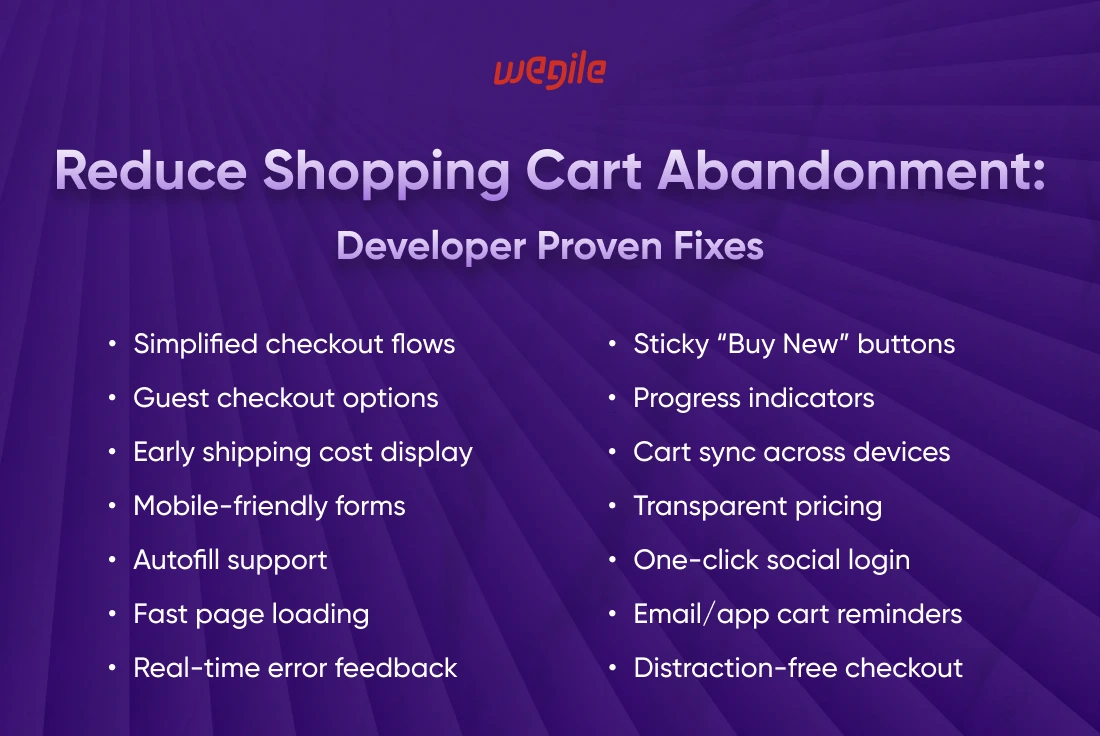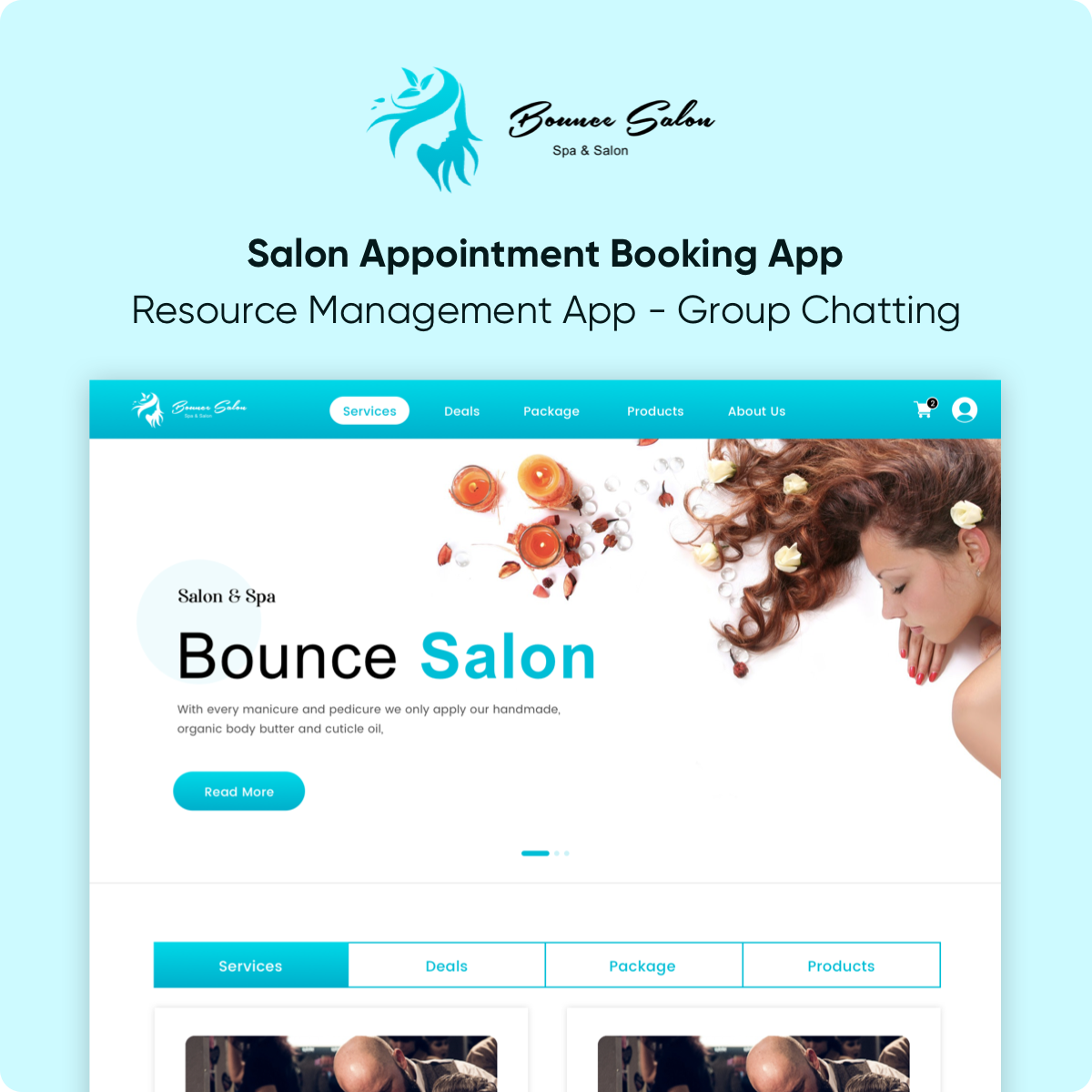As online shopping grows, developers face a challenge that is both subtle and significant. Customers visit e-commerce websites, add products to their carts, then leave without completing their purchases. This is more than a user behavior problem, as it signals something deeper within the system.
Understanding why customers abandon shopping carts requires not only marketing insight but also technical clarity. It is the developer’s responsibility to examine user flows, remove invisible friction, and create a system where buying feels natural.
According to the Baymard Institute, the average shopping cart abandonment rate is around 70 percent across global e-commerce sites. That means seven out of every ten users leave without converting, and this happens even after they have shown strong buying intent. Such numbers are not caused by one issue alone as in most cases, technical gaps in performance, user interface problems, and poor checkout design drive people away just moments before they would have completed a sale.
Let us now explore why shopping cart abandonment rates remain high. Also, learn what developers can do from a user interface and experience perspective and how back-end systems can be improved to support smoother conversions.

Customers visit your website because they are interested. They browse categories and review product details. They even add items to their carts, but then they leave. Understanding this gap between interest and conversion is the first step toward solving the abandonment problem.
While marketers may focus on discounts or loyalty campaigns, developers must focus on something else entirely. They must ask where the code or design is interrupting the user’s momentum.
To understand why customers abandon shopping carts, let us examine the factors that lead users to exit the purchasing process during the final stages of their journey:
Each of these moments creates hesitation. The more technical friction the user faces, the less likely they are to return. Abandonment does not always come from a conscious decision. Often it is the result of too many small blockers placed in sequence.
When a cart is abandoned, the business loses revenue. But for developers, it must be seen as a system error. Not a bug in the code but a flaw in design logic. The purpose of a functional e-commerce interface is to support natural progression from interest to purchase. If that journey is broken at the cart level, the issue lies in how the system responds to user behavior.
Let us now identify the key usability problems that developers must solve with intention and testing.
Usability failures are often invisible until tested under real-time stress. That is why developers must consider cart abandonment not as a user’s fault but as a symptom of technical gaps hidden in plain sight.
Design does not exist just for aesthetics, in fact, in e-commerce portals, design exists to guide. Every step in the buying journey must signal the next move without the need for interpretation.
When the cart feels chaotic or lacks structure, the user begins to hesitate. They wonder if they missed something or selected the wrong variant. That doubt, even for a second, is enough to break momentum.
Explore how a developer’s understanding of visual clarity can increase cart completion rates.
Trust begins with clarity, and when information is easy to find and steps are visually distinct, users feel confident enough to proceed.
Every additional second a user waits for a page to load increases the chance they will abandon the process. Users expect instant feedback when they click checkout or update a quantity. When that feedback is delayed, even slightly, the user assumes the system is unreliable. They may hit the back button or close the browser window entirely. This is not impatience, instead it is a response to lag in communication between user action and system output.
Let us break down how performance optimizations can directly reduce shopping cart abandonment rates.
The best user interface cannot save a slow experience. Performance must be treated as a key part of conversion logic, not just a back-end metric.
More users now shop from their phones than from desktops. Yet many e-commerce platforms treat mobile checkout as a scaled-down version of the main site, and that is a huge mistake.
Cart abandonment rates spike when mobile users feel the interface was not made for their screen. Tapping the wrong button or pinching to zoom breaks the natural rhythm of buying. Thus, developers are required to build with mobile-first logic instead of treating it as a responsive afterthought.
Let us explore what makes mobile checkout interfaces successful in reducing abandonment.
When mobile feels smooth and familiar, users are more likely to complete purchases without stopping halfway.
When something goes wrong during checkout, users must know what to fix and how. A generic error message causes panic and reduces confidence in the platform. Clear and specific feedback gives users control. Developers should design systems that predict mistakes before they happen and offer helpful guidance instead of just showing alerts.
Understand how to improve form validation and feedback without interrupting the buying journey.
A supportive system does not wait for users to fail. It helps them succeed without asking them to guess what went wrong.
One of the biggest reasons why customers abandon shopping carts is unexpected pricing. When taxes, shipping fees, or additional costs are revealed late in the process, trust breaks down. The user feels misled; they were ready to buy, but the change in final price makes them question the platform’s honesty.
Developers can tackle this issue by creating flows where costs are transparent from the beginning and consistently shown throughout checkout.
Let us understand how pricing transparency reduces cart exit rates in practical ways.
Users are willing to pay when they feel respected. Sudden changes in cost break that respect and lead them to leave.
Account creation is important for long-term customer engagement, but forcing it too early often backfires. Users who just want to complete a one-time purchase may not want to go through an email verification process.
Developers should build systems that support flexible authentication methods which allow users to buy first and register later. That option reduces friction and makes the checkout feel respectful of user time.
Here is how fast login methods support better cart conversions.
Letting users decide how much effort they want to give increases the chances that they will complete the purchase.
Users often begin browsing on one device and complete purchases on another. If the cart does not sync across sessions or devices, the user must start again. That interruption causes drop-offs because users do not want to rebuild their cart.
Developers must build persistent cart systems that work across logged-in states and device types to maintain flow.
Here are ways to build cross-device shopping continuity.
A seamless experience means users never feel like they lost progress, even when switching devices.
Developers cannot reduce shopping cart abandonment by relying only on speed improvements or basic interface tweaks anymore. Real solutions now require smarter systems that respond to user actions in real time without disrupting their momentum.
Technologies such as cloud computing, AI, and blockchain are no longer secondary tools. These are now essential parts of a checkout experience that must feel personal and secure.
When the right systems are used correctly, developers can remove hidden blocks that cause hesitation and build user journeys that support trust. It is not about impressing users with features. It is about helping them move smoothly through the buying process without second guessing.
Below are ways these technologies help reduce cart abandonment in real-world applications.
Cloud storage helps retain user carts across devices without forcing re-selection or re-login. Developers can store product data in cloud sessions that do not break even if the browser closes or the app crashes. Cart recovery becomes automatic which helps returning users pick up exactly where they left off.
AI models detect hesitation points such as long pauses before payment selection and adapt flows in response. Developers can create rule-based logic where checkout suggestions appear based on user behavior, not a fixed path. Systems powered by generative AI can offer proactive nudges like alternate payment suggestions or FAQs without disrupting flow.
Blockchain-based transaction records help prevent manipulation in taxes, shipping costs, or discount applications. Developers can use blockchain layers for secure, traceable payments without adding extra steps. Trust builds naturally when the platform can show price integrity and proof of payment in real time.
Shopping cart abandonment rates are not just marketing problems. They are technical challenges rooted in the way systems handle trust, performance, and experience. Developers have the tools and insights to close this gap by building e-commerce journeys that support user intent without asking for too much. Small delays, unclear messages, or unexpected costs are enough to push people away. But thoughtful engineering can turn abandoned carts into completed sales.
If you are building or improving your e-commerce platform, your codebase must reflect not just speed but empathy. Design each step with the customer’s mental flow in mind. Test it not just for features but also for friction. Reduce every blocker until the system feels like it was built for the buyer and not just for the brand.
For e-commerce app development that solves real checkout problems with high-converting technical solutions, connect with Wegile. Our developer-led product teams understand both code and commerce, so they can help you reduce cart abandonment without guesswork.


 Browse Our Services
Browse Our Services
